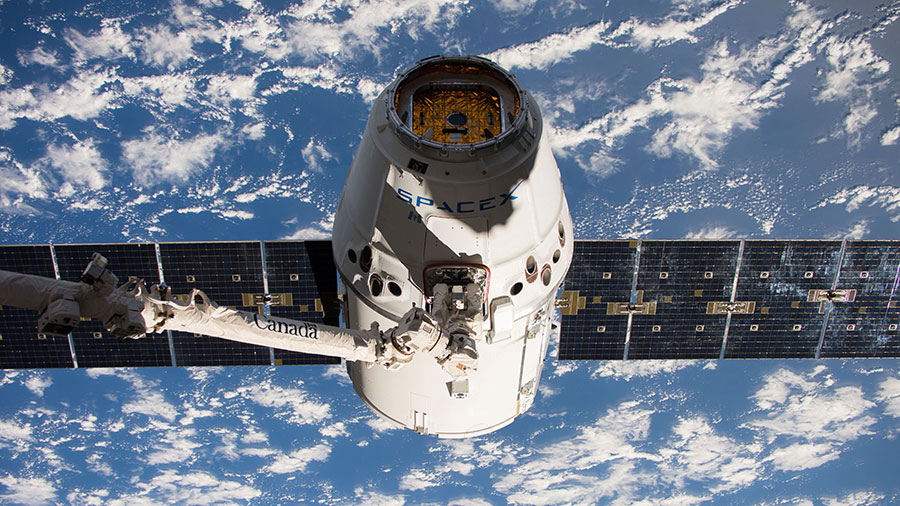
Chinese Experiment Reaches Space Station in Historic First

A Chinese experiment is now on the International Space Station (ISS), having reached the orbiting lab Monday (June 5) aboard a SpaceX Dragon cargo spacecraft.
NanoRacks, a Houston-based company that helps other companies and institutions make use of the ISS, worked with the Beijing Institute of Technology to fly Chinese DNA research to the orbiting outpost.
No commercial Chinese payload had ever flown to the orbiting lab before.
China's state-run Xinhua news agency reported Sunday (June 4) that the 8-lb. (3.5 kilograms) experiment is designed to answer questions such as: Do "space radiation and microgravity cause mutations among antibody-encoding genes, and how does it happen?"
The experiment will be installed on the U.S. side of the ISS. Xinhua noted that astronauts there will conduct studies using the device in about two weeks, and data from their studies will be sent back to the Chinese researchers on Earth.
Wolf trap
"There is a U.S. law in place, known as the Wolf amendment, that bans cooperation between the U.S. space agency NASA and Chinese government entities, but this [DNA experiment] deal is purely commercial and therefore considered legal," Xinhua said.
Deng Yulin, who is leading the Chinese research, said that this is the first time an ISS experiment has been independently designed and fabricated in China.
Get the Space.com Newsletter
Breaking space news, the latest updates on rocket launches, skywatching events and more!
"This cooperation does not violate any laws and regulations, including the Wolf amendment. We do it in an open and visible way," Deng told Xinhua. "This is a new model of cooperation that we can follow in the future."
Spirit of the concerns
"We were careful to honor not only the Wolf Amendment, but [also] the spirit of the concerns of some towards working with the Chinese," NanoRacks CEO Jeff Manber told Inside Outer Space. "But via the commercial pathway, we are able to craft a world-class research project that demonstrates the leadership of NASA and the space station in low-Earth orbit."
Manber said he was pleased to have this first commercial project from China underway and that he "looks forward to carefully building a program that enhances the commercial competitiveness of American companies in space. I also look forward to one day soon working on board the Chinese space station," he added.
Leonard David is author of "Mars: Our Future on the Red Planet," published by National Geographic. The book is a companion to the National Geographic Channel series "Mars." A longtime writer for Space.com, David has been reporting on the space industry for more than five decades. Follow us @Spacedotcom, Facebook or Google+. This version of this story was posted on Space.com.
Join our Space Forums to keep talking space on the latest missions, night sky and more! And if you have a news tip, correction or comment, let us know at: community@space.com.

Leonard David is an award-winning space journalist who has been reporting on space activities for more than 50 years. Currently writing as Space.com's Space Insider Columnist among his other projects, Leonard has authored numerous books on space exploration, Mars missions and more, with his latest being "Moon Rush: The New Space Race" published in 2019 by National Geographic. He also wrote "Mars: Our Future on the Red Planet" released in 2016 by National Geographic. Leonard has served as a correspondent for SpaceNews, Scientific American and Aerospace America for the AIAA. He has received many awards, including the first Ordway Award for Sustained Excellence in Spaceflight History in 2015 at the AAS Wernher von Braun Memorial Symposium. You can find out Leonard's latest project at his website and on Twitter.










